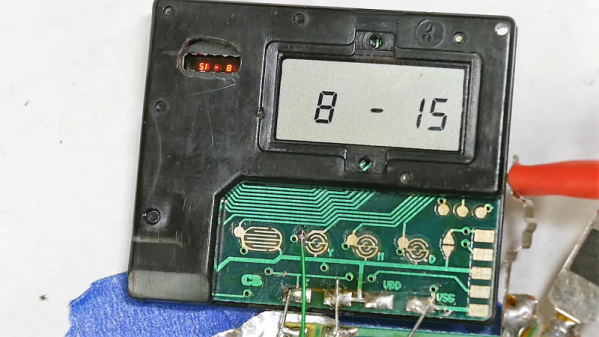Chances are good that most of us will go through life without ever having to perform gas chromatography, and if we do have the occasion to do so, it’ll likely be on a professional basis using a somewhat expensive commercial instrument. That doesn’t mean you can’t roll your own gas chromatograph, though, and if you make a few compromises, it’s not even all that expensive.
At its heart, gas chromatography is pretty simple; it’s just selectively retarding the movement of a gas phase using a solid matrix and measuring the physical or chemical properties of the separated components of the gas as they pass through the system. That’s exactly what [Markus Bindhammer] has accomplished here, in about the simplest way possible. Gas chromatographs generally use a carrier gas such as helium to move the sample through the system. However, since that’s expensive stuff, [Markus] decided to use room air as the carrier.
The column itself is just a meter or so of silicone tubing packed with chromatography-grade silica gel, which is probably the most expensive thing on the BOM. It also includes an injection port homebrewed from brass compression fittings and some machined acrylic blocks. Those hold the detectors, an MQ-2 gas sensor module, and a thermal conductivity sensor fashioned from the filament of a grain-of-wheat incandescent lamp. To read the sensors and control the air pump, [Markus] employs an Arduino Uno, which unfortunately doesn’t have great resolution on its analog-to-digital converter. To fix that, he used the ubiquitous HX7111 load cell amplifier to read the output from the thermal conductivity sensor.
After purging the column and warming up the sensors, [Markus] injected a sample of lighter fuel and exported the data to Excel. The MQ-2 clearly shows two fractions coming off the column, which makes sense for the mix of propane and butane in the lighter fuel. You can also see two peaks in the thermal conductivity data from a different fuel containing only butane, corresponding to the two different isomers of the four-carbon alkane.
[Markus] has been on a bit of a tear lately; just last week, we featured his photochromic memristor and, before that, his all-in-one electrochemistry lab.
Continue reading “A Homebrew Gas Chromatograph That Won’t Bust Your Budget”














